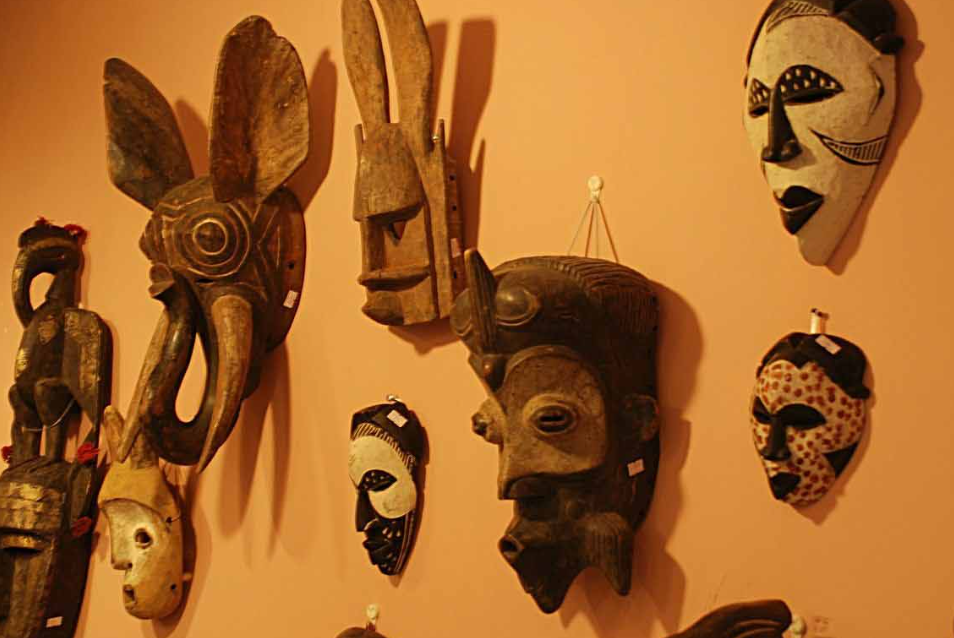
African people believe that the mask of the gods contains powerful and terrible power, and people without certain qualifications can not withstand the oppression of the God's possession, so those who can wear the mask of the gods are basically noble elders in the tribe, and themselves have special authority.
According to the verification of archeologists, as early as the primitive times, African groups have already produced the custom of wearing masks, this mask culture has been spread through thousands of years to modern times, and masks have always occupied a unique position in the hearts of African people.
The article "Cultural Connotation of African Masks" once recorded: African masks are simple and thick, an important part of African traditional art and closely related to African traditional religions. Africans believe that all things have spirits, and they have a strong sense of worship for their ancestors, and believe in their dead spirits as gods.
They put this feeling of worship in the mask, so the mask is more like a sacred object that allows them to communicate with their ancestors and gods. In Africa, people wear carved masks and dance or hold religious ceremonies as a way to communicate between gods and men.
A fusion of imagination and creativity
In addition to anthropomorphic mask shapes, there are various types of African masks, including: top mask, feather mask, bone mask, side carving mask, etc., these masks are used for different activities because of their material differences.
In terms of decoration, additional decorations such as animal hair, plant fibers, animal teeth and shells from nature are the most popular among Africans, and coatings made of natural organisms are also common.
In the traditional mask making, African artisans will play their imagination to the extreme, in addition to the technical and material preparation, experienced mask artisans have conceived the rough outline of the finished mask in their minds before the formal production, to ensure that the production process will not stop midway because of the lack of inspiration.
Since each mask is the result of the imagination of the artisans, it is difficult to see two identical mask shapes in the mask exhibition in Africa, and they have a unique style.
However, all the African tribes living on this land have their own unique mask culture, which is the comprehensive crystallization of African people's religious beliefs, moral ethics and aesthetic principles. With the development of The Times, African masks are gradually going out of Africa to the world, being appreciated by more and more people and becoming an independent art.
Third, "Hot foot dance" : praise the glory of women
"Hot foot dance", also known as the "motor dance", the name of the benchmark is entirely based on the dance as a motor of the rapid dance steps.
The real name of the "hot foot dance" is the Kortediwa mask dance, which is one of the intangible cultural heritage heritage from the African country of Mahavi.
Kotdiwa mask dance was born in the 1850s, and was initially used in a series of important activities such as the wedding, funeral and marriage of the Guru.
It is a dance similar to sacrificial prayer, and it is also a comprehensive crystallization of the traditional dance and handicraft of the Guru.
Ivorian mask dance performers are usually men, and when performing, they will wear the national woven skirt of grass or linen dress, carry a oxtail whip, and dance with handmade ghost masks.
Although the performers are men, the connotation of the dance itself is to celebrate the wisdom and hard work of women.The masks worn in the dance are actually the symbol of women, although each handmade mask is different, but without exception, the carved lines of the mask are smooth curves, delicate and beautiful, which represents the beautiful and generous, gentle and brave female image shaped in the hearts of Africans, and is a tribute to the brilliance of motherhood.
After the formal performance of the Ivorian mask dance, the dancers need to quickly flip the hands and feet on both sides according to the piccolo and drum sound of the soundtrack, and the legs should also maintain a high frequency of shaking, which is a great test of the physical strength of the performers.
Few people can dance a whole dance without a break. Usually, it is performed in segments. After a dance, the actors will immediately adjust their breathing and jump into the next dance as quickly as possible. This is also the main reason why the performers are mostly men, and women's physical fitness is generally difficult to support such intense sports.
Africa, as the second continent in the world, has its own unique charm of humanities and arts. Wild and mysterious African tribes spread across this vast land. Ethnic groups with different historical backgrounds collide with each other, resulting in all-encompassing cultural and artistic achievements.
Over the long years, the hard-working African people have created a unique African culture with their own hands. Some African art may seem incomprehensible to others, but the world we live in is already a melting pot of cultures, and the presence of African art only adds to the cultural history of the world.

